
Introduction to the Paul-Elder Model of Critical Thinking
Dr. Sara Rich
Before choosing your own pseudoscience adventure to think critically through, let’s take a moment to explain our methodology. Namely, we have used the Paul-Elder Model of Critical Thinking to work through each question at issue and to arrive at a well-reasoned conclusion. This process has been made transparent for our readers: each section of each chapter represents one step of the Paul-Elder Model, which leads up to the written research component where all those steps are put together into a coherent argument. Each unit concludes with some critical thinking exercises pertaining to that particular pseudoscience, inspired by Gerald Nosich’s Learning to Think Things Through. This will help readers to further think and apply their learning to the pseudoscience of interest.
Step 1: Elements of Reasoning
The first step of the Paul-Elder Model is the Elements of Reasoning (Fig. 1). We start with the question at issue – identifying the key question that you have about a given topic. Why? All answers first require a question. Furthermore, starting with the question at issue also sets up the thinker with a sense of epistemic humility. In other words, with every question asked, there is an implicit recognition of a gap in knowledge. The questioner becomes like Socrates, who recognized all the things that he did not know. There are limits to human knowledge, and no one knows everything. Critical thinkers recognize the gaps in their knowledge and use ambition and curiosity to rectify them with integrity and responsibility.
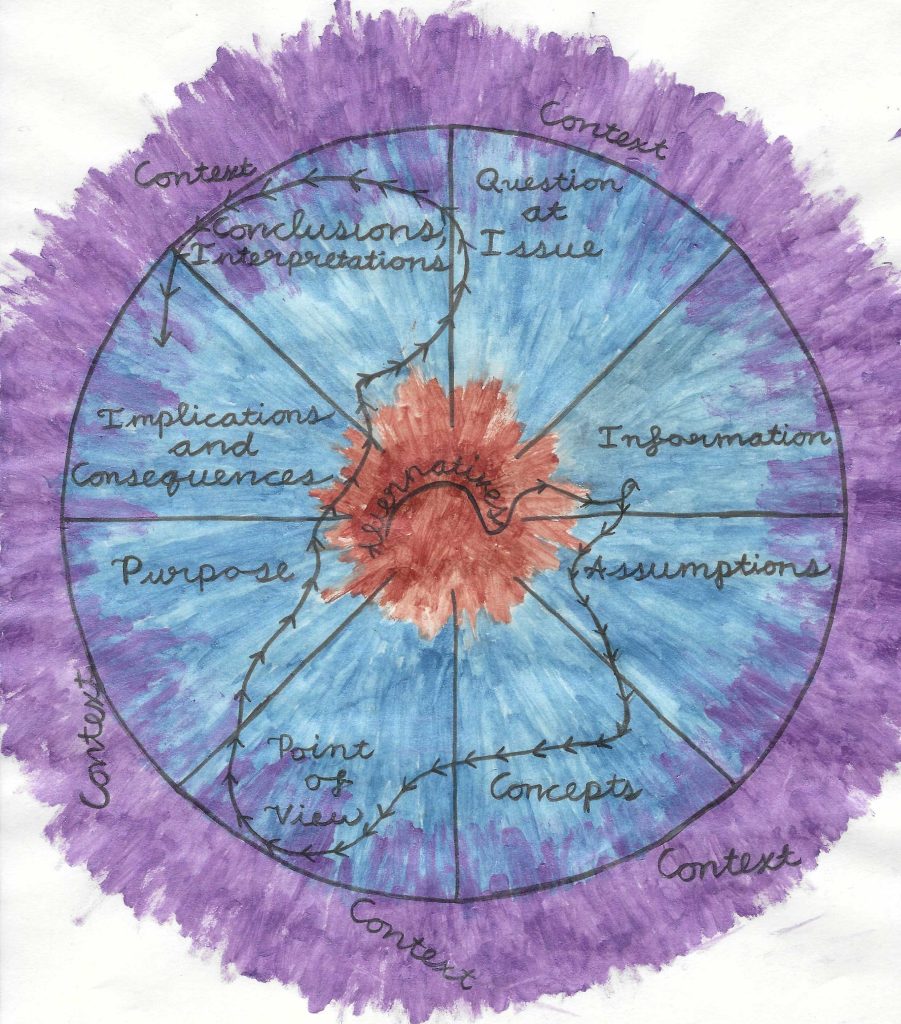
Once the question at issue is established, the critical thinker should proceed around the wheel of the 8+ Elements of Reasoning (always considering the context that undergirds the problem as a whole and alternatives to each element), until finally arriving at conclusions and interpretations. Arriving at a conclusion or interpretation is arriving at a reasoned answer to the question at issue. To go one step further, the critical thinker may return to implications and consequences in order to understand the real-world effects of the conclusion drawn. Many pseudosciences, including science denialism and the conspiracy theories that inform them, are highly consequential on individual and societal scales.
Step 2: Disciplinary Lenses
To fine-tune this conclusion even further, the critical thinker should use relevant disciplinary lenses to think about the problem the way an expert would (Fig. 2).
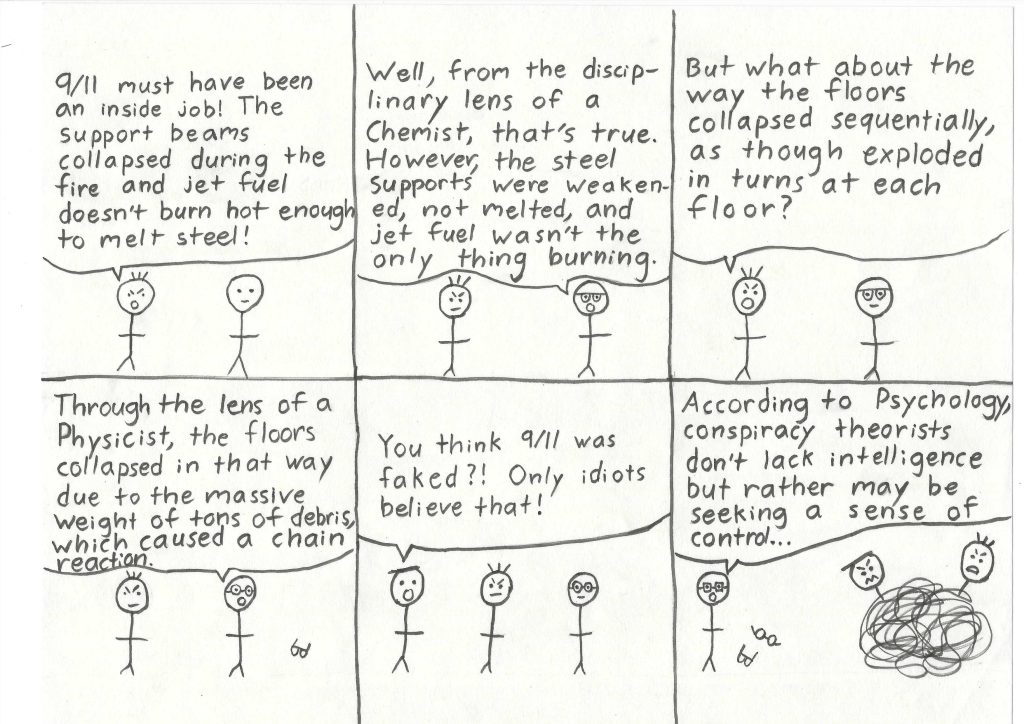
To provide another example, if your question is about Atlantis, some relevant disciplinary lenses to think with would be history, geology, and archaeology. Using the disciplinary lenses is like taking on the point of view (one of the elements of reasoning) of unbiased experts in relevant fields of study. It also offers the opportunity think using different types of reasoning: namely inductive (history), deductive (geology), and abductive (archaeology). This practice will help ensure that final conclusions are drawn from all the relevant evidence (primary source documents, geological data, and archaeological excavations), that they are placed in context (historical, geological, and archaeological), and that they demonstrate a complete understanding of the most important related concepts (Platonism, plate tectonics, artifact typologies, etc.).
Step 3: Standards of Critical Thinking
Once the fine-tuned conclusion is reached, it should be self-evaluated using the Standards of Critical Thinking (Fig. 3). These standards can be used to evaluate any empirical claim and the evidence used to support it, but it again requires a certain level of epistemic humility to apply them to your own argument. How well an argument holds up against the standards is a good indicator of how well it has been reasoned.
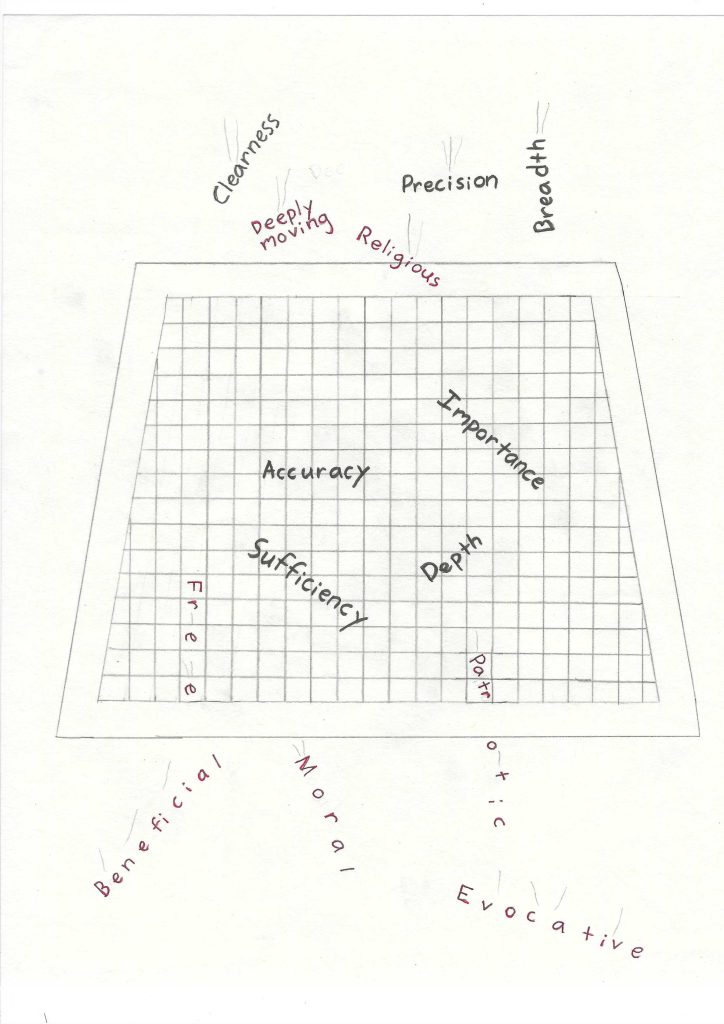
All relevant empirical claims should also be inspected for weak inductive, deductive, or abductive reasoning. Relevant claims and arguments should also be scrutinized for logical fallacies. Psuedosciences and conspiracy theories are generally brimming with logical fallacies, and learning to identify them can even be a fun pastime for the critical thinker! To learn more about logical fallacies, we recommend the open-access textbooks by Matthew Van Cleave, Introduction to Logic and Critical Thinking, and Andrew Lavin, Thinking Well.
Step 4: SEE-I Method
The SEE-I method is an outline for creating a complete and coherent argument (Fig. 4). The SEE-I method can consist of as few as four sentences, or an entire doctoral dissertation can be organized this way. Effectively, the thesis statement – or concise response to the research question – comes first, followed by further elaboration and explanation (provision of context, definition of key concepts, address of the counterargument, etc.). The next section of the argument consists of examples, each in support of the thesis statement. The final step is to illustrate the thesis statement by using an analogy.
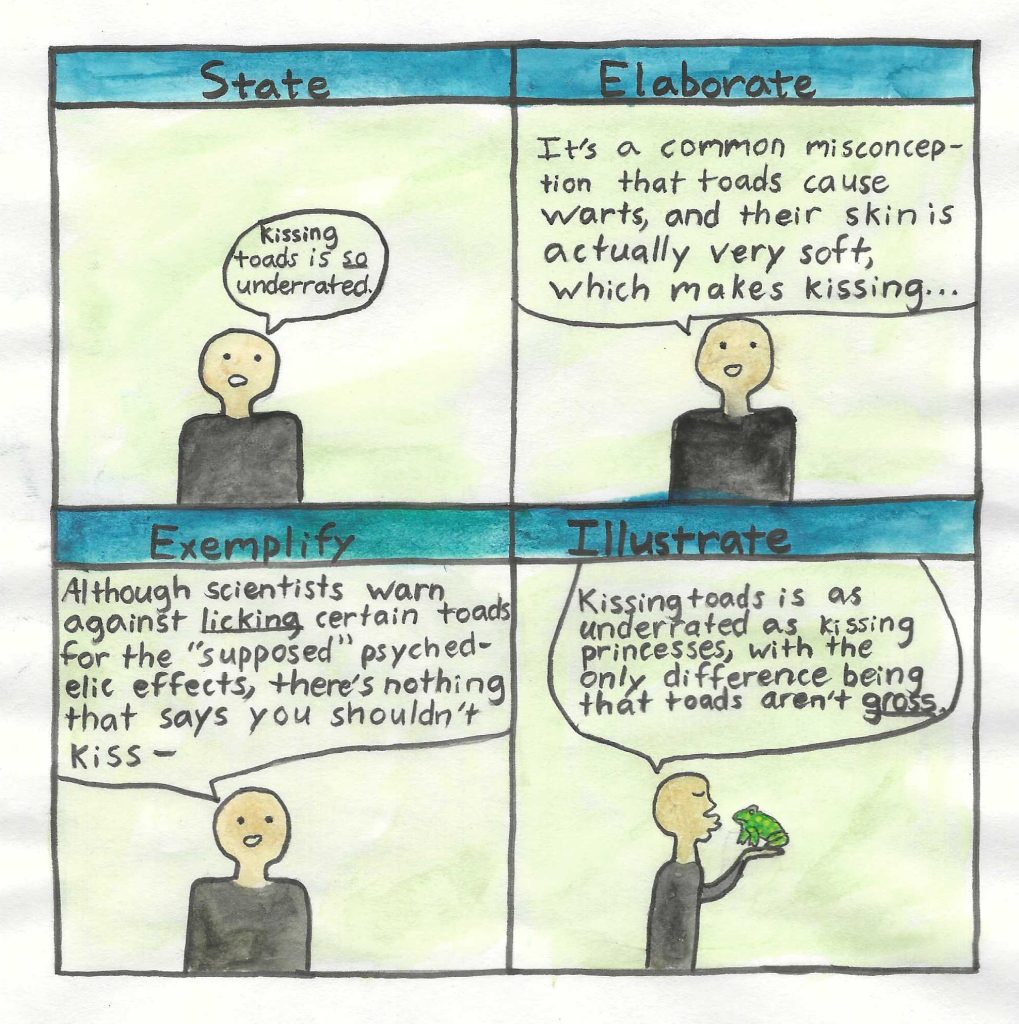
Analogy drives home the purpose of the argument and leaves an unforgettable image in the mind of the audience. Analogies compare two dissimilar things in order to make a point; in this way, analogy is different from metaphor or simile, which often function to beautify or elaborate a concept. Composing strong analogies is difficult for many people because it works at the intersection of critical and creative thinking. But as with all things, with some practice, composing original and powerful analogies to illustrate your point will become second nature, and the quality of your arguments will increase as a result. However, always be wary of the false analogy, a common logical fallacy that bring into comparison two things that only share traits in common on a superficial level. Strong analogies still work even after digging deeper into the connections and commonalities between these two dissimilar things.
Step 5: Counterarguments
Now that the argument is structured, it should again be inspected for weak points. This step requires changing your point of view to that of an audience member hearing your argument. If you were presenting this argument at a professional conference, how might a naysayer in the audience counter your claims? If you were a lawyer presenting this argument in a court of law, what might the opposition point out in your argument to prove their own case? What would a skeptical reader find fault with about your argument? Make note of those weak points and counterarguments and address them.
Step 6: Composing the Final Argument
Combining all the above steps, the final step is writing out the complete argument in the form of a research paper (Fig. 5). All the relevant information and evidence has been gathered and evaluated. The argument has been reasoned through and outlined with the SEE-I model. The standards of critical thinking are upheld in every instance. Counterarguments and weak points have been addressed and rectified as needed. Now it’s time to communicate the answer to your research question and how you followed the evidence to arrive at that conclusion.
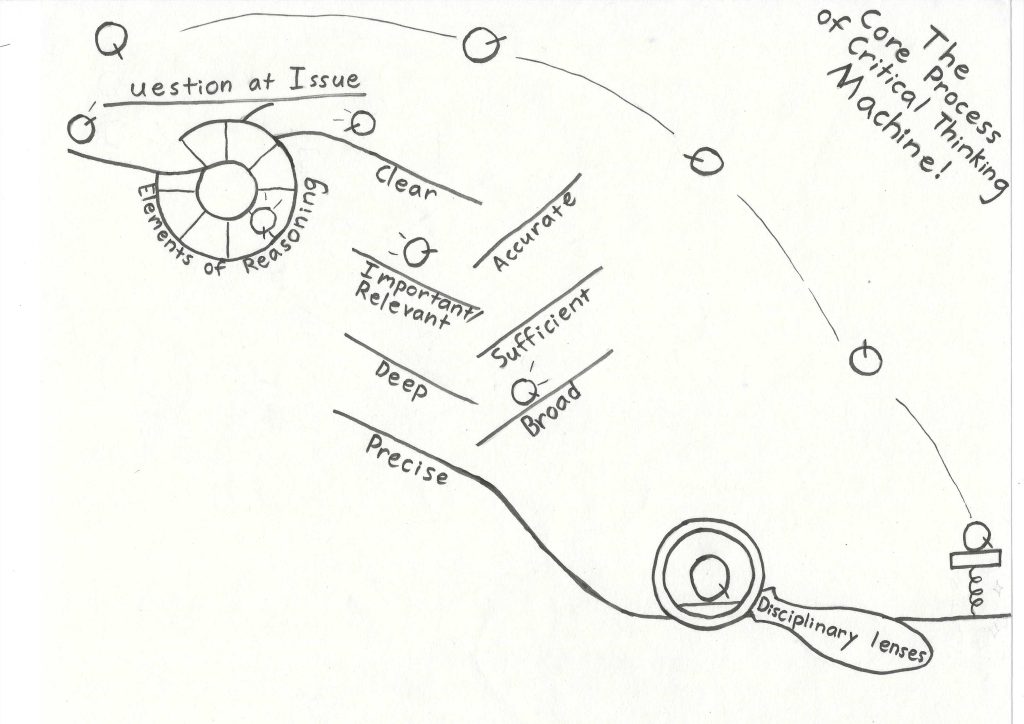
Embarking on a research project is like setting out on a journey to a place you’ve never been; you may have some idea of the destination, but the path will almost certainly change courses many times, with unexpected encounters along the way, and where you end up will almost certainly be a little different from the idea you first had in mind. So enjoy the adventure!